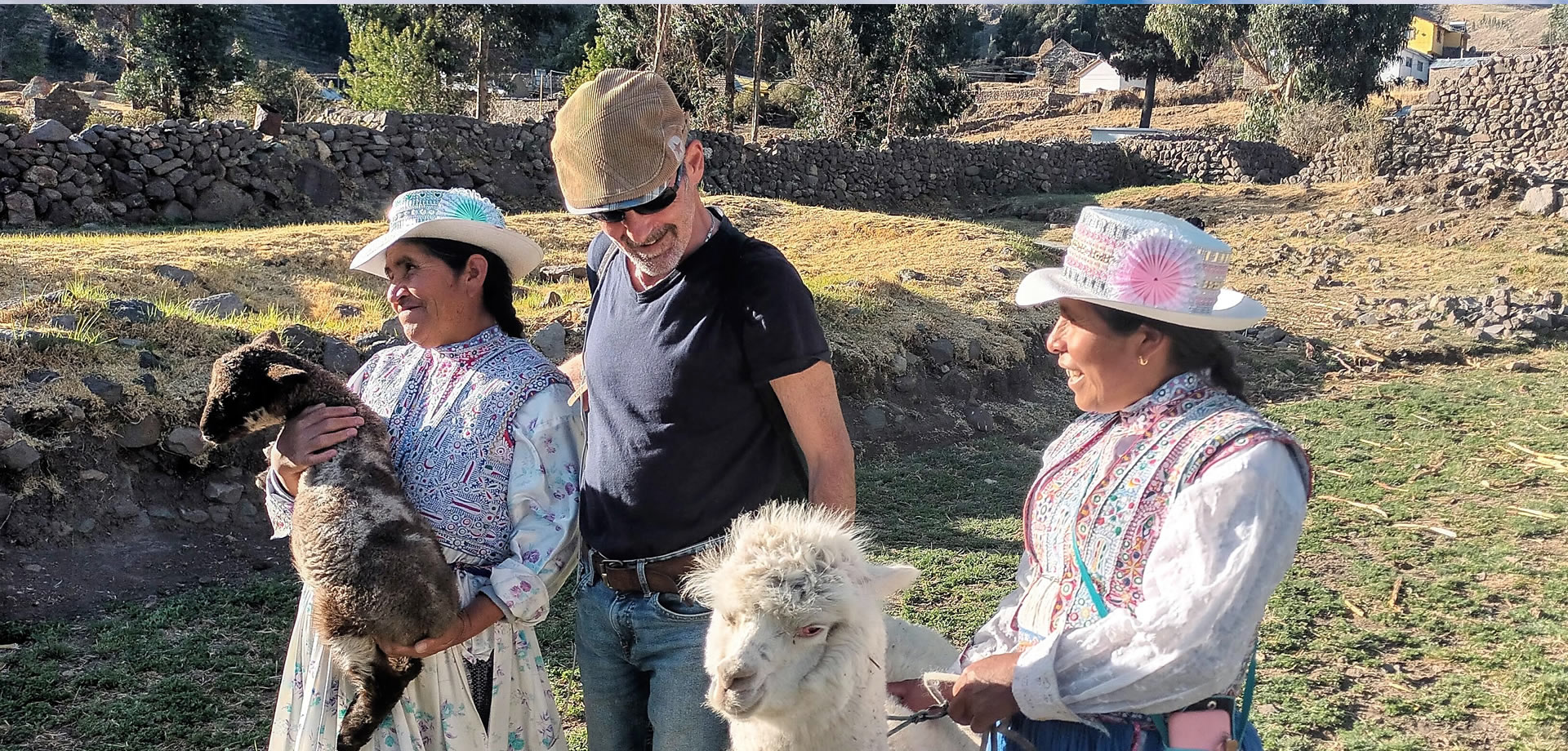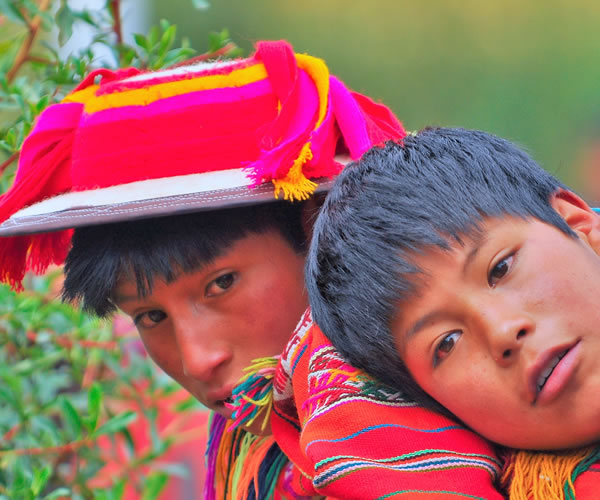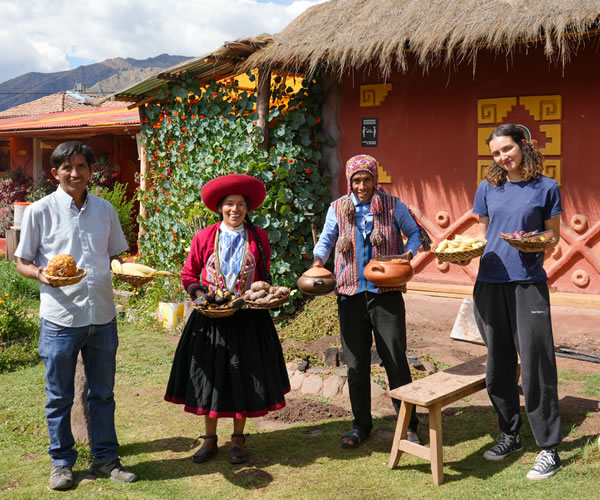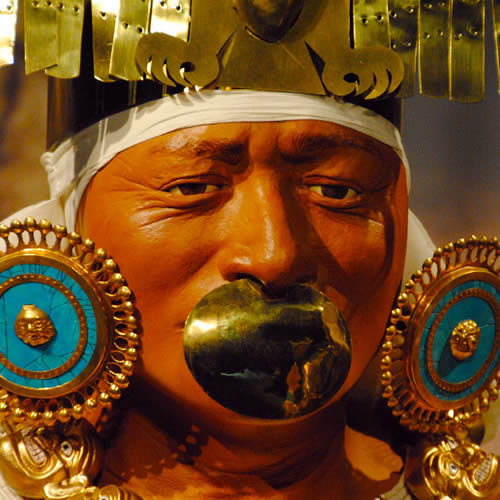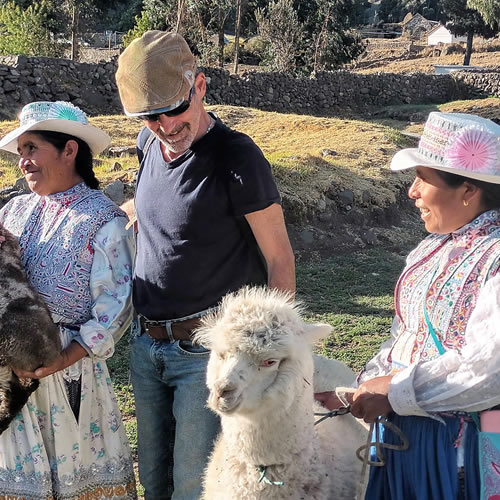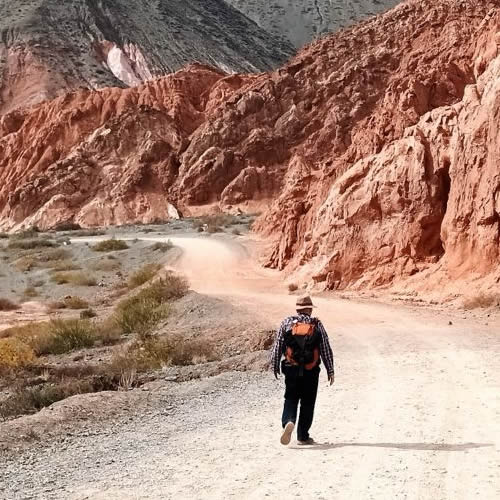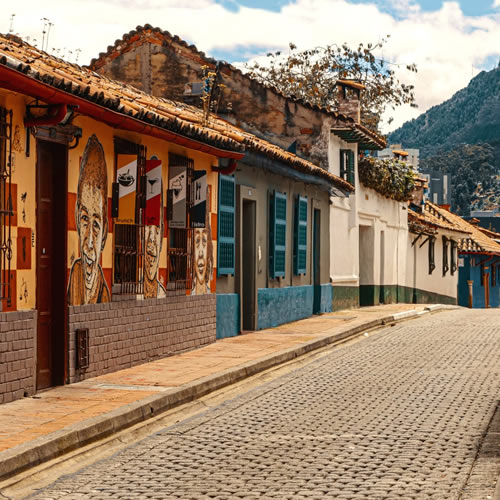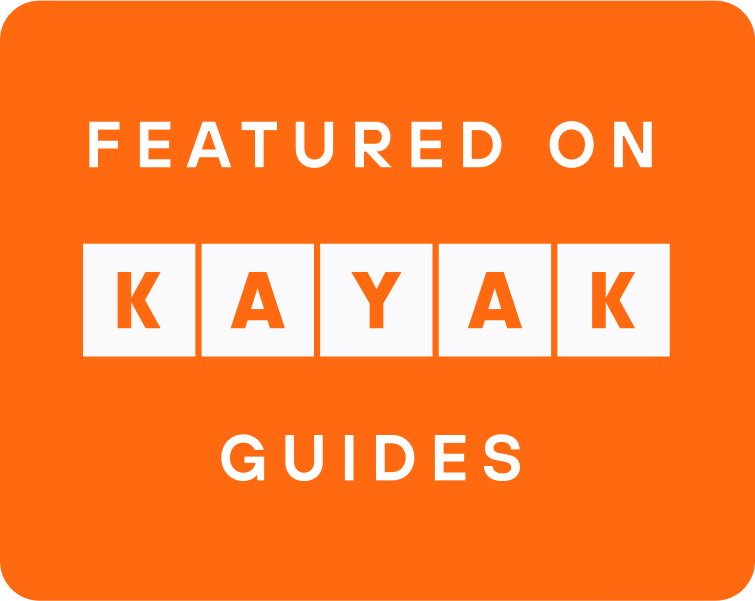
Intercultural Peru

This circuit allows you to explore this beautiful country that is steeped in culture, art, history, customs and tradition. All this in the company of local guides who are experts in interculturalism. This allows you to appreciate the trip from the depths of its population.
ITINERARY
Duration: 15 days
An assistant from our agency “Intercultural Tours” will be waiting for you at the airport to take you to your hotel, located in a privileged area of the city.
Visit the city of Lima, declared a World Heritage Site by UNESCO for its rich republican and colonial architecture. During the tour we will visit the modern neighborhood of Miraflores, where we can observe the Pacific Ocean and the historic center where most of the historical monuments and two beautiful squares are agglomerated. On one side the Plaza de Armas and on the other side the Plaza San Martin. Then we will stop at the convent of San Francisco, where we can visit the colonial catacombs and appreciate the religious art that has bequeathed this city. In the afternoon, we will leave for Paracas in a very comfortable bus. We cross the Panamerican Highway through the Peruvian coast to the city of Paracas, where we will spend the night.
Day dedicated to discovering the scenic and historical riches of the Peruvian coast. In the morning, we will embark to the Ballestas Islands. On the way, we will see a mysterious design called the “Candelabro”, an immense geoglyph marked on a sand hill. The design measures 180 meters and has a depth of 50 cm. Then, we approach the small archipelago called “Ballestas”. The natural limestone formations are composed of cliffs, caves and natural arches. We will be able to see thousands of seabirds nesting on the islands. On the edge of the cliffs, we will see dozens of sea lions swimming and with a little luck some Humboldt penguins. After this beautiful experience, we will return to the Chaco pier to continue our adventure in a unique and little known place. We will be able to walk on the sand dunes that hide the paradisiacal oasis of Morón. The feeling of solitude in the middle of the desert is a privilege difficult to compare. Then, we will make a short trip to a very important archaeological site in the area called Tambo Colorado. Like the oasis, the place is little visited despite its well-preserved archaeological remains. At the end of the day we return to Paracas to spend the night. NOTE: In case you want to fly over the Nazca lines, the itinerary can be arranged to do it from the city of Pisco.
Travel by comfortable bus to return to the city of Lima, where we will take a flight to the city of Arequipa.
Arequipa is a beautiful colonial city known as the “White City” for the presence of monuments made of sillar, which is a whitish stone of volcanic origin. The historic center of the city has been declared a World Heritage Site by UNESCO. Our visits will begin with the Convent of Santa Catalina, which is a unique colonial work located in the middle of the city. Inside you will find colorful streets, lush gardens and vestiges of what was a center of religious formation in colonial times. Then, we will stroll through the streets of the city, passing through the main square to the San Camilo market, a place where you can appreciate the variety of agricultural products and fruits concentrated in one place. It is a great moment to have a direct contact with the local population and their customs. In the afternoon, we leave you free time to enjoy this possible city or visit the Museum of the Juanita Mummy, which was found frozen and in an intact state in the foothills of a volcano near the city.
In the morning, departure by minivan to the town of Chivay. We will skirt the volcanoes that dominate the city to reach the Aguada Blanca reserve. In this place we will be able to observe the Andean camelids such as alpacas, llamas and especially the vicuña, which is the most prized animal in the Andes for the quality of wool it produces. It is a wild animal and striking for its elegant poses. We continue our journey to cross a pass at 4,950 meters altitude, from where we have a beautiful 360-degree landscape where you can see a series of volcanoes and snow-capped mountains of the Andes. After lunch in the town of Chivay we move to Coporaque to meet our first host family. Smiles and hugs are present from the first contact. Together with our local guests we will go to discover the village that houses a small church and a museum with some pre-Columbian objects. Our local Guais are proud to show us their way of daily life in the heart of their own home. Dinner and overnight at the inhabitants’ home.
Early in the morning, we will board a vehicle that will take us through the Colca Canyon, on the way we will see magnificent agricultural terraces on the edge of the valley. Then, when we arrive at the viewpoint of La Cruz del Condor, we can make a short walk in order to observe the depth of the canyon of more than 1200 meters deep. In this same place you can observe the wonderful flight of the condors. These birds of more than 3 meters in wingspan pass at times a few meters away from the visitors. On the way back, we will make some stops in picturesque villages of the valley to learn more about their traditions and way of life. Lunch will be taken in Coporaque, together with our local guests, who will show us in the afternoon some daily activities of agriculture and cattle raising. At the end of the day we will take a short walk to the local hot springs. An exclusive place to enjoy a refreshing bath surrounded by beautiful landscapes. Overnight and dinner at the inhabitants’ house.
In the morning a last activity with the local community to see the milking of the cows and the process of making Andean cheese. It is time to say goodbye to the family that welcomed us these days. We will always want to come back. In the afternoon, we will leave the Colca Valley and head towards the Altiplano region. The trip is full of beautiful landscapes surrounded by mountains, lakes and mythical spaces. We will cross one of the Andean mountain ranges to reach a large plateau where the highest navigable lake in the world called Titicaca resides. In the late afternoon, we will arrive in the city of Puno for the night.
Departure from the hotel to take a private boat that will allow us a unique experience on Lake Titicaca. On the way we will stop at the floating islands of the Uros in Titino, a place still far from the large masses of visitors, which allows a more intimate interaction with the villagers who build their islands, houses and common spaces using exclusively the “Totora”. We can also listen to their life stories and learn about their traditions. Then we approach the Capachica peninsula, where we will do two unique activities with the population. On the one hand we will sail with small sailboats and then we will be able to participate in the collection of fishing nets. Afterwards, we will have a delicious lunch of quinoa and fish, and then we will start interacting with a new family that lives on the edge of the wonderful Lake Titicaca. The villagers show us their forms of production, weaving. At the end of the day a beautiful sunset on the edge of the lake allows us to enjoy once again the privilege of having unforgettable spaces and company. Dinner and overnight at Casa de habitantes.
In the morning, we will make a transfer to the city of Juliaca, a place that concentrates a large number of traders and manufacturers. Here, we will take a very comfortable bus to cross the Altiplano in the direction of Cusco. After a few hours of travel, we arrive at the pass of La Raya (4,300 meters), which marks the end of the Altiplano and the beginning of a fertile inter-Andean valley bathed by the Vilcanota River. We will see how the form of rooms are changing, highlighting the adobe houses plastered with mud or plaster and red tile roof. This creates a beautiful contrast with the blue sky and the greenery of the surrounding mountains. After crossing innumerable Andean towns and landscapes, we arrive at the city of Cusco. A place that holds an enormous historical and archaeological legacy for having been the capital of the Inca Empire. Overnight in a hotel near the historic center to enjoy the city.
In the morning, we will climb to the Chinchero plateau, passing through splendid landscapes of crop fields and Andean towns. Upon arriving at the place, we will visit the Inca town that maintains a system of terraces of singular beauty due to the symmetry with which they have been attached to the mountains. You can also see the Jesuit church built on one of the Inca temples, recalling the colonial era. After this visit, we leave for Moray, which at first glance looks like an amphitheater made up of several terraces arranged in concentric circles. In reality, it was an agricultural research center where the Incas experimented with different types of crops, since the position of the terraces creates a whole series of microclimates that imitate different ecosystems and life zones. Then, we will go to the town of Huamsbamba, passing by the shores of the beautiful Piuray Lake, which is a true mirror of water. Upon arriving at the town, we will have a new interaction with a family from the Andes. In this case, they are expert weavers and breeders of Guinea Pigs. It is the ideal place to enjoy a traditional Andean avocado called Pachamanca, which consists of cooking vegetables and meats in an ancestral way and using naturally heated stones. At night before going to sleep, we will enjoy the story telling of our hosts. Dinner and night at the inhabitants’ house.
After a warm goodbye from our guests, we headed towards Ollantaytambo in the morning. This allows you to discover the place, away from the masses of visitors who arrive in the afternoon. At the top of this massive construction are the remains of the Temple of the Sun, made entirely of rocks weighing more than 20 tons and brought from quarries more than 9 km away. At the bottom of the enclosure there are a series of ritual fountains of singular beauty. Then, we will walk through the town of Ollantaytambo, one of the few that has preserved its Inca urban architecture. We will be able to observe the way the houses are organized and interact with the local population who show their daily way of life with great pride. Next we will take the Andes train to Aguas Calientes.
This day will be dedicated to visiting Machu Picchu, the lost city of the Incas, officially discovered in 1911, declared a World Heritage Site by UNESCO in 1983, and later chosen Wonder of the Modern World in 2007. The site fascinates everyone. visitors, not only because of the mysteries that surround it, but also because of the beauty of the place and its natural environment. During the guided tour adapted to the needs of visitors, the guide’s explanations will transport our imagination through time, to better understand the function of the city and the various hypotheses that surround this enigmatic Inca place. After the visit, we return to the city of Aguas Calientes to take the train back to Ollantaytambo and finally be transferred by private vehicle to the city of Cusco.
Transfer to the Cusco airport for an internal flight to the city of Lima, where you can take your international flight or make an extension if required.
What includes?
- Small groups that guarantee real interaction with the local population
- Transfers and/or assistance upon arrival and international departures
- Transportation for the entire circuit (line transportation, trains, privatized vehicles or flights according to the circuit)
- Guide in the requested language and trained in intercultural issues
- Meeting with several Andean families willing to share their knowledge and traditions
- Entrance fees to attractions included in the entire circuit
- Food in the inhabitants’ houses and according to demand (Half board or full board)
- Internal flights according to the itinerary
- Permanent assistance, before, during and after the trip
What is not included?
- International flights
- Entrance fees to archaeological sites or museums not included in the circuit
- Travel insurance
- Tips
Recommendations for the visitor
Spending the night with elements of minimal comfort can be a small adventure, however the human warmth of the residents easily complements the lack of comfort to which we are accustomed in urban areas.
Our experiences respect the local population, their customs and traditions, therefore we recommend following the instructions of your guide so as not to break the intercultural harmony that we preserve.
The best way to avoid the consumption and production of plastics is by avoiding their use. For this reason, we recommend having a canteen or bottle that can be reused. We provide water to fill your bottles
